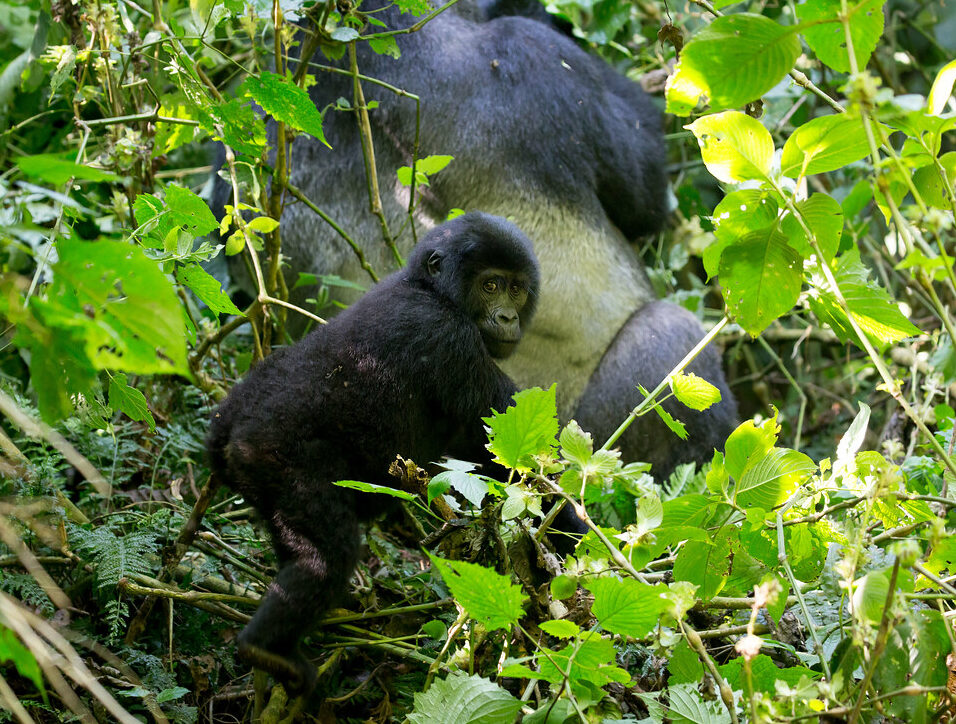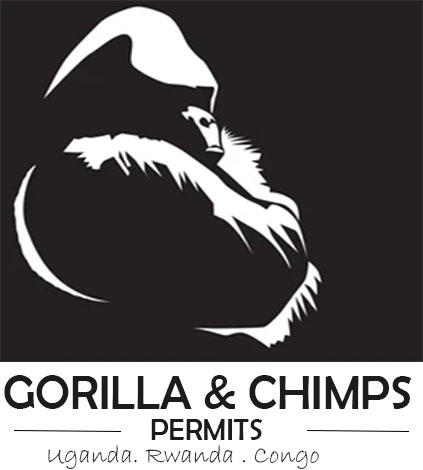Rushaga Sector – The Heart of Gorilla Trekking in Bwindi
The Rushaga sector, located in the southern part of Bwindi Impenetrable National Park, is Uganda’s most diverse gorilla trekking region. It’s the only sector in Bwindi that offers both standard gorilla trekking and the Gorilla Habituation Experience, making it a favorite among wildlife enthusiasts and photographers.
This region is surrounded by rolling hills, dense rainforest, and vibrant local communities, providing a rich blend of adventure, culture, and unforgettable wildlife encounters.

Where Is Rushaga Sector Located?
Rushaga sits in Kisoro District, bordering the famous Mgahinga Gorilla National Park and close to the Rwanda border via Cyanika. From Kampala, the drive to Rushaga takes about 9–10 hours via Kabale and Kisoro. Visitors can also fly from Entebbe to Kisoro Airstrip and then take a short drive to Rushaga.
The roads to the sector are rough but scenic. Along the way, you’ll pass through traditional villages, lush banana plantations, and stunning valleys carved by the Albertine Rift.
Why Choose Rushaga for Gorilla Trekking?
Rushaga is known for its high concentration of habituated gorilla families—more than any other sector in Bwindi. This gives visitors more chances to secure permits, especially during peak seasons.
Its varied terrain suits different fitness levels, from moderately easy treks to longer, more demanding hikes. Whether you’re a first-time trekker or an experienced hiker, Rushaga has a trail that fits your expectations.
Rushaga is also the only sector where you can join the Gorilla Habituation Experience, a full-day adventure that allows up to four hours with semi-habituated gorillas, accompanied by researchers and trackers.
Gorilla Families in Rushaga Sector
Rushaga is home to several fully habituated gorilla families, each with its own personality and story. Nshongi was once the largest group ever habituated in Bwindi, while Kahungye, Mishaya, and Bweza are known for their playful juveniles and dominant silverbacks. Busingye broke away from Kahungye and now leads a small, tight-knit group.
Other families include Rwigi, Mucunguzi, and the newly recognized Posho group. These families are scattered across the hills and valleys, with daily movements that make each trek unique.
In addition to the trekking families, Rushaga hosts two groups under the Gorilla Habituation Program—Bikingi and Bushaho. These gorillas are still getting used to human presence, so the experience is more raw and intimate.
Treks in Rushaga start at the Rushaga UWA visitor center. After a short briefing, groups of eight are assigned to different families based on interest and fitness levels.
How Challenging Are the Treks in Rushaga?
Rushaga offers a range of trekking difficulties. Some families settle closer to the starting point, requiring shorter walks, while others roam deep into the forest, demanding longer hikes and good stamina.
The terrain features steep hills, dense vegetation, and slippery trails during the rainy season. A walking stick, sturdy hiking boots, and long-sleeved clothing are essential.
Despite the challenges, most visitors agree that the trek is worth every step. The moment you lock eyes with a wild mountain gorilla, fatigue disappears.
Accommodation Options in Rushaga
Rushaga has seen rapid growth in tourism, leading to a variety of accommodations near the park entrance. Lodges like Rushaga Gorilla Camp, Ichumbi Gorilla Lodge, and Gorilla Valley Lodge cater to a range of budgets.
These lodges offer views of the forest, freshly prepared meals, and easy access to the trekking point. Some also arrange guided walks to nearby villages, waterfalls, or viewpoints overlooking the Virunga ranges.
Booking early is highly recommended, especially between June and September and during December holidays.
Community and Culture Around Rushaga
Rushaga is not just about gorillas. The local communities here, mainly the Bakiga and Batwa, welcome visitors to experience their culture. You can visit homesteads, taste local food, attend dance performances, and learn traditional farming practices.
Batwa community tours showcase the history of the forest’s original inhabitants. They demonstrate how they once hunted, gathered, and lived in harmony with the forest before being relocated for conservation.
These experiences add meaning to your safari and support community-led conservation projects.
Who Should Trek in Rushaga?
Rushaga is ideal for visitors who want flexibility in trekking options, better permit availability, and the chance to participate in gorilla habituation. It suits travelers combining Uganda and Rwanda in one trip and those visiting nearby Lake Mutanda or Mgahinga National Park.
It’s also a great option for photographers and researchers looking for extended time with gorillas.
Plan Your Gorilla Trek in Rushaga
Permits for standard gorilla trekking in Rushaga cost $800 for foreign non-residents as of 2025. The Gorilla Habituation Experience costs $1,500 and allows four hours with the gorillas instead of one.
Only a limited number of permits are issued daily, so booking in advance is critical. A reliable tour operator can handle the permit, accommodation, and transport arrangements for a seamless experience. Pair your Rushaga trek with a visit to Lake Bunyonyi, Mgahinga Gorilla National Park, or a golden monkey trek for a diverse adventure in southwestern Uganda.

